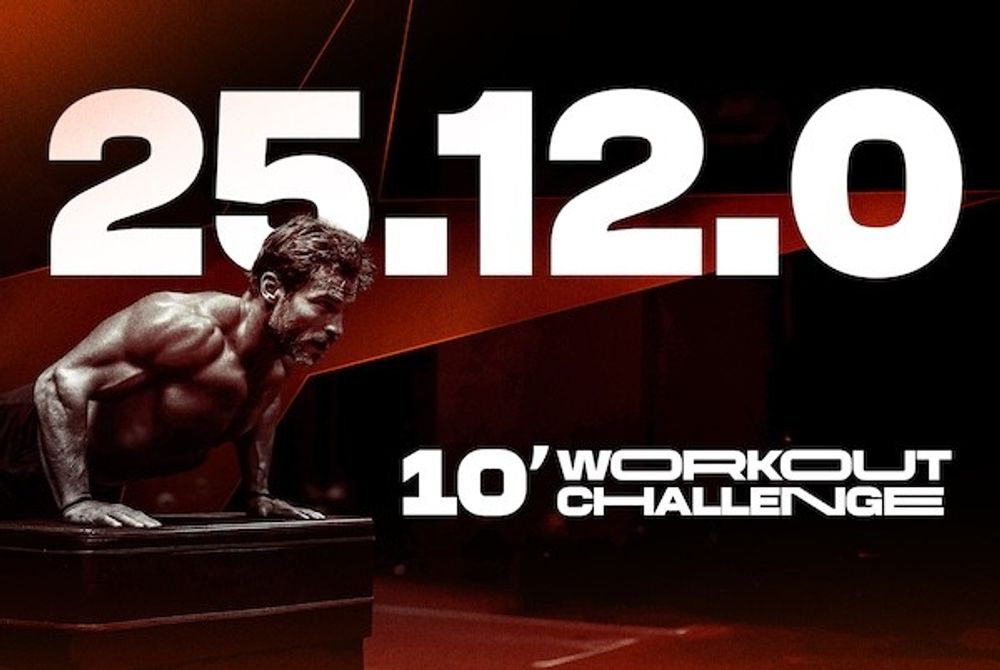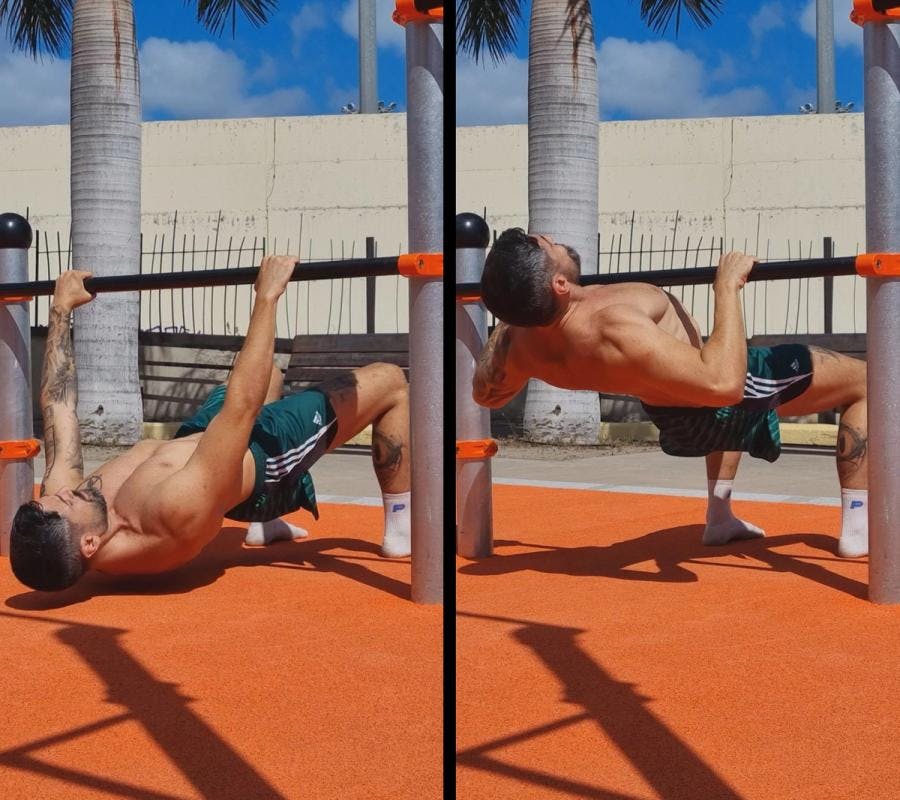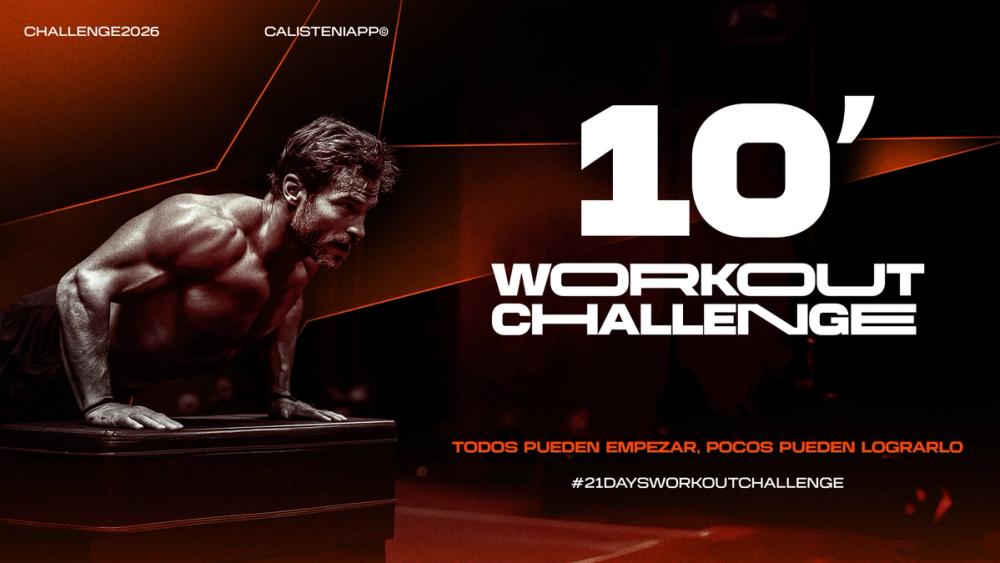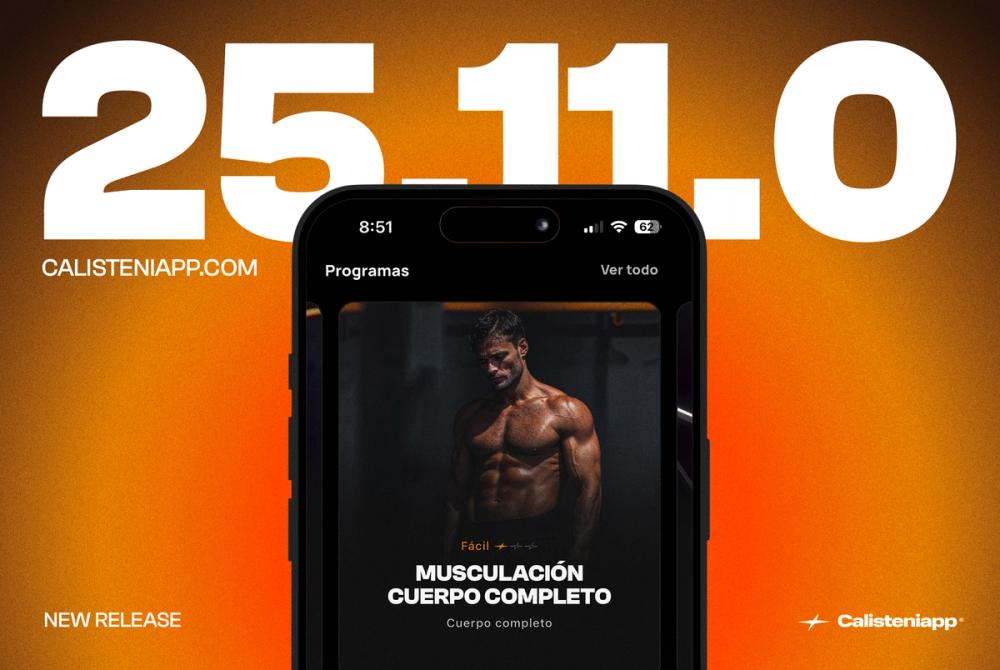
Release 25.12.0
Calisteniapp v25.12.0 introduces program pause, performance improvements, and the 10’ Workout Challenge 2026. No shortcuts, just better tools

Training your back is essential to maintain muscular balance, good posture, and a functionally strong body. Thanks to calisthenics, you can work all the muscles of your back without the need for machines or weights, using only your own body weight.
In this article, you’ll discover 10 effective calisthenics back exercises, organized by level, that you can easily include in your routines to build strength, control, and stability.
Calisthenics activates the back muscles in an integrated way, developing both strength and body control. The main muscle groups involved are:
These back muscles in calisthenics work together in every exercise, strengthening both the posterior chain and overall muscle coordination.

Below you’ll find a selection of calisthenics back exercises, arranged from easiest to hardest. You can use them as a training progression, advancing gradually as your strength and technique improve.
Lie face down or face up with your elbows supported and perform scapular retractions, slightly lifting your torso off the ground. This exercise strengthens the scapular stabilizers and improves posture.

Hang from a bar with your arms extended and perform scapular retractions, activating your lats without bending the elbows. Over time, increase the range of motion or try performing them one-handed.

Also known as body rows, these can be done with a low bar, gymnastic rings, or even a sturdy table or chairs. You can vary the grip (supinated or pronated) or adjust your body angle to modify the difficulty. A higher bar makes it easier for beginners.


Perfect for beginners to start training the back with calisthenics without weights. Hold the top position (isometric), control the descent (negatives), or work through partial ranges of motion depending on your level.
The classic calisthenics back exercise. It works the lats, traps, and rhomboids. Change your grip (overhand, underhand, neutral) to target different areas of the back.

With your body suspended and legs in an “L” position, perform bar rows. This is an advanced movement requiring great core strength and body control.

These increase power and are key for progressing toward the muscle-up. You can pull your chest to the bar, release the bar at the top, or even add a clap. Try the underhand version, pulling the bar toward your belly or hips.

Asymmetrical progressions that challenge stability. Variations include archer pull-ups, typewriter pull-ups, and one-arm pull-ups, ideal for developing unilateral strength and control.

An advanced exercise that combines pulling and pushing. The first phase heavily activates the back, especially the lats and rhomboids. It requires solid technique, power, and a strong foundation in explosive pull-ups.

One of the most demanding calisthenics back exercises. It trains the lats, core, and scapular stability. Practice isometric and dynamic versions: tucked, advanced tucked, half front lever, and full front lever.

To see results, structure your training based on your level and available time. It’s common to dedicate 1 or 2 back days per week, within your pull days, and combine them with push and leg days.
Example Distribution:
This setup allows you to train in a balanced way and integrate both calisthenics back routines and full-body workouts, depending on your goals.
These principles are essential to progress in calisthenics safely and sustainably.
Want a personalized routine that adapts to your level and progress?
Try the EVO Back and Biceps Routine on Calisteniapp. The system runs an initial test and then adjusts the exercises and difficulty automatically based on your performance. After each session, the app analyzes your feedback and suggests new goals and variations to keep you improving.
👉 Download Calisteniapp and start training your back with calisthenics without weights, at home or in the park, with smart and effective programming.
By Yerai Alonso

Yerai Alonso
Cofundador de Calisteniapp, referente en calistenia y el street workout en Español. Con más de una década de experiencia, es creador de uno de los canales de YouTube más influyentes del sector. Autor del libro La calle es tu gimnasio, campeón de Canarias y jurado en competiciones nacionales e internacionales.
Join our newsletter
Learn everything you need to know about calisthenics

Calisteniapp v25.12.0 introduces program pause, performance improvements, and the 10’ Workout Challenge 2026. No shortcuts, just better tools

Start training or give your routines a boost with this 21-day Calisthenics challenge for all levels that will put your discipline to the test.

Calisteniapp is a symbol that represents our obsession with excellence, our essence, and the path we want to define for the next ten years.
